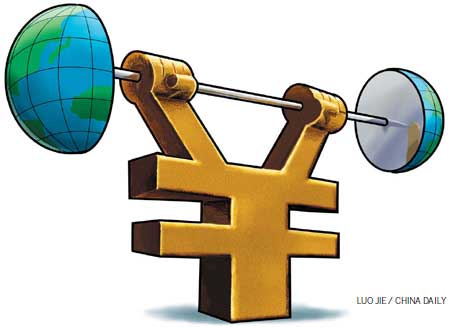GDP growth options narrowing
- By Xin Zhiming
 0 Comment(s)
0 Comment(s) Print
Print E-mail China Daily, October 23, 2014
E-mail China Daily, October 23, 2014

With the lowest quarterly GDP growth in five years, a reeling real estate sector, weak manufacturing activity and falling fixed-assets growth - the Chinese economy is facing its biggest challenge since it was hit hard by the global financial crisis.
Worse, policymakers can no longer afford to launch aggressive stimulus programs to bail out the economy, as they did five years ago. They seem to have no way out but to accelerate reform and restructuring, while resorting to targeted stimulus measures of limited scale as they attempt to gradually lead the economy out of the woods.
Moderate stimulus policies are likely in the pipeline to prevent the economy from continuing its nosedive in the fourth quarter.
With GDP growth coming in at 7.3 percent year-on-year in the third quarter - the lowest this year and the worst since the first quarter of 2009 - China may fall short of its annual target. But for optimists, the worst scenario also means the start of an upward trend.
The low growth rate is the result of weakening economic activity, as indicated by a slew of indicators in recent months. It is also the result of a higher base in the third quarter of last year, when GDP expanded by 7.8 percent year-on-year.
Those who expected the economy to hit the trough and start to climb out must have seen the signs of improvement in September's economic data. For example, industrial output grew 8 percent year-on-year, compared with 6.9 percent in August. Trade growth beat market expectations, and retail sales remained stable in September.
The job market, a big concern of policymakers, remains resilient. So far this year, more than 10 million jobs have been created, already exceeding the whole-year target set earlier this year.
What is encouraging is that the tertiary sector contributed 46.7 percent of the GDP growth in the first three quarters, up by 1.2 percentage points year-on-year and 2.5 percentage points higher than industry's contribution. Since the tertiary sector is more job-friendly, the new trend will contribute to the resilience of the job market and in turn help stabilize the economy.






Go to Forum >>0 Comment(s)